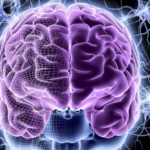Hold onto your neural networks, folks! A groundbreaking study by Chinese scientists reveals that multimodal large language models (LLMs) like ChatGPT are developing human-like ways of understanding objects—think 🐕, 🚗, and 🍎—just like our brains do. Published in Nature Machine Intelligence, this research could reshape how we build AI with *actual* human-like smarts.
From Pixels to Perception
Led by researcher He Huiguang from the Chinese Academy of Sciences, the team discovered that LLMs don’t just recognize an apple’s color or shape—they grasp its cultural symbolism, uses, and even emotional vibes. Sound familiar? That’s because it’s eerily close to how humans process the world! 🌍
Brain Scans Meet AI
Using brain imaging and behavioral tests, scientists mapped how both humans and AI models like GPT-4 conceptualize objects. The kicker? The AI’s 66-dimensional concept patterns aligned with activity in human brain regions responsible for categorization. Talk about mind-blowing synergy! 💥
Humans vs. Machines: The Showdown
Here’s the twist: While humans blend visuals and semantics (like linking a dog’s fluffiness to loyalty), LLMs lean harder on abstract labels. But multimodal models—those trained on text AND images—nailed human-like consistency in tests. Could this be the key to next-gen AI that ‘gets’ us? 🤔
This isn’t just sci-fi—it’s a roadmap for AI that thinks, learns, and maybe even dreams (metaphorically, for now) like we do. Stay tuned for a future where your chatbot understands memes as deeply as your bestie. 😉
Reference(s):
Multimodal LLMs can develop human-like object concepts: study
cgtn.com






